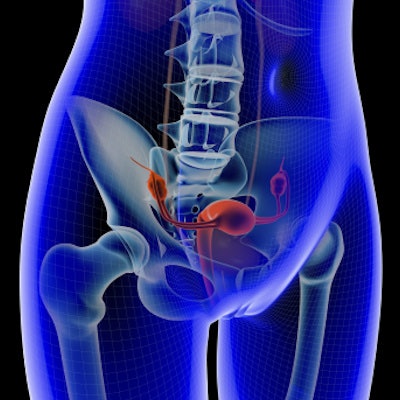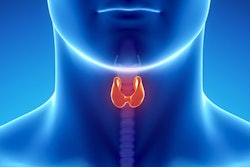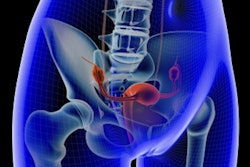
Uterine artery embolization (UAE) is a better option than hysterectomy for women experiencing postpartum bleeding, but it may be underutilized, according to researchers at a March 16 news conference ahead of the Society of Interventional Radiology (SIR) 2021 annual meeting.
Despite evidence that UAE results in reduced hospital stays and costs, and offers an opportunity to preserve fertility, researchers led by Dr. Janice Newsome of the department of radiology and imaging sciences at Emory University School of Medicine found hysterectomy was used 60% more often than UAE to manage bleeding. Hysterectomy was twice as common as embolization in Hispanic patients, and it was more common in rural and nonteaching urban hospitals, in the South, and among Medicaid and self-paying patients.
 Dr. Janice Newsome.
Dr. Janice Newsome."We already knew the immense benefit of UAE and what it can offer patients, but we wanted to know the incidence and treatment trends of postpartum hemorrhage (PPH) in the United States," Newsome said.
Postpartum hemorrhage is a leading cause of the loss of life related to childbirth. Approximately 700 women across the U.S. die each year as a result of pregnancy or pregnancy-related complications, according to a 2018 study by the U.S. Centers for Medicare and Medicaid.
Uterine artery embolization can be an effective method to treat postpartum bleeding by inserting a catheter under imaging guidance to release tiny particles to block the uterine artery. But women are often not informed of the procedure, an alternative to the more traditional hysterectomy.
In the study to be presented at SIR, Newsome led a team that combed through a national database of 9.8 million live births between 2005 and 2017 and identified all women with live-birth deliveries who experienced clinically significant postpartum bleeding. The researchers found the overall incidence of PPH was 31 per 1,000 live births. The most common intervention for postpartum bleeding was transfusion, at an average incidence of 116.4 per 1,000 cases of PPH.
The incidence of hysterectomy to treat postpartum bleeding was significantly greater than the incidence of UAE (20.4 versus 12.9, p < 0.001). On logistic regression, the likelihood of mortality from hysterectomy was 3.1 times that of UAE (p < 0.001). What's more, a prolonged hospital stay was 2.1 times more likely with hysterectomy than UAE (p < 0.001).
"Postpartum hemorrhage can occur quickly, and effective treatment options should be readily available to every woman having a child in the United States. For hospitals that have [interventional radiology] services available, this can be accomplished by creating a concrete care plan for new mothers who are at higher risk of dangerous bleeding during childbirth," Newsome said.
In other findings discussed at the press conference, radiologist Dr. Siddharth Padia of the University of California, Los Angeles presented evidence that genicular artery embolization (GAE) is a promising therapy to treat patients with symptomatic knee osteoarthritis.
 Dr. Siddharth Padia.
Dr. Siddharth Padia.Padia and his team sought to evaluate the safety and efficacy of GAE for symptomatic knee in this prospective, single-center, open-label investigational device exemption study, which launched in 2018. Patients were between 40 and 80 years old with moderate or severe focal knee pain and osteoarthritis on knee radiograph. Patients had no prior knee surgery and were not candidates or were not willing to undergo total knee replacement surgery.
Over a nine-month period, 40 patients were treated with GAE. The left knee was treated in 25 out of 40 (62%) subjects, and the right knee was treated in 15 (38%) subjects. Medial knee pain was treated in 27 (68%) and lateral knee pain was treated in 13 (32%). Technical success was achieved in 100% of subjects.
In a third study, Dr. Jason Levy, a vascular and interventional radiologist at Northside Hospital in Atlanta, presented evidence that radiofrequency ablation (RFA) provides quick and sustained pain relief for patients whose cancer has spread to their bones.
 Dr. Jason Levy.
Dr. Jason Levy.In this study, researchers enrolled 218 patients from October 2017 to February 2020 at 15 global sites. Of the 218 subjects, 184 (89%) were treated for metastatic lesions involving the lumbar or thoracic spine, while 22 (11%) were treated for metastatic lesions located in the iliac crest, periacetabulum, sacrum, or mixed vertebral and pelvic locations.
Results showed patients experienced significant relief in as little as three days, and the benefits lasted for more than 12 months, which is a significant improvement over radiation treatment, Levy said. Because of the palliative nature of the treatment, many patients were unable to be surveyed through the entire 12-month milestone.
"Commonly used radiation treatments can take weeks to provide pain relief. A few weeks can represent a large portion of the remaining life in these patients, and RFA may be able to give them the best quality of life possible in the time they have left," he said.
The SIR meeting kicks off on March 20.




















